I’ve heard nothing but fantastic things about the vineyard at Bell Hill – Larry McKenna telling me it’s “somewhere I have to visit”, so it’s a pleasure to be pulling into the parking area and walking down the hill to the winery on a beautiful mid-autumn afternoon. They don’t have a Cellar Door and the wines are a bit of an enigma – hardly anyone I know outside of wine industry faces having tried, or even heard of this iconic North Canterbury label.
This is a property that demands an investigation – as so much of what there is to know and understand about Bell Hill, comes from the land. Sherwyn Velhuizen, co-owner with Marcel Giesen (who is away today), understandably, suggests we start with a loop of the vineyard and a walk around – explaining as we go what’s happening.
Sherwyn Veldhuizen: We’re just trimming the top of the canopy at the moment. It’s not a typical activity for this time of the year, but if you look at the Shelf, at the top there you see how hairy the top of the canopy is. Being under nets through the veraison period and everything keeps growing, some seasons more than others, and we get this quite thick, mushroomy top to the canopy. And this just makes everything tidy so its going to save us time and labour costs when it comes to doing the winter pruning work.
We had a couple of cold nights last week: -2 and -2.2 degrees, so where its all brown, that’s frost affected on the canopy from just last week.
WineFolio: Did you get badly frosted earlier this year?
SV: Yes we did, we’re about 30% down. We had a couple of events over a couple of weeks, but the major event was a twelve hour frost. We have water and we’ve got a wind machine and if it gets very cold you turn the water on. And there were just a few areas where we had ‘guard failings’. We put the guards on so the water doesn’t go on the track, so if you’re driving around in the middle of the night in a hurry, trying to fix something… and some of the guards weren’t in quite the right places and were blocking off the sprinklers. Some of the further parts of the vineyard – like The Quarry, we just didn’t quite get enough pressure up there. It could have been worse.
WF: It’s very closely planted.
SV: When we came here in 1997, we came here for lime. This was a lime quarry until the mid 1930s, and that’s what we were chasing, to see if everything they say about lime and wine, and wine from lime-based soils is true. And it is. What I’m talking about there is minerality, and acid as part of the structure and shape of the wine, and longevity.
Close together because we are here for the lime, so we wanted to force the roots to go down and pick up what’s in that soil profile. If you spatially restrict your vines then the roots can only go down. This high calcium content soil type holds a lot of water, so after the first two or three seasons you can dry farm.
So we dry farm all of our vineyards, apart from those first few years of new plantings. We’ve got a new block that we planted last spring and we’ve got another 8000 vines to go in this spring, and we’re certainly watering those vines twice a week, as its very dry at the moment.
The three keys to establishing a vineyard, and that’s where you get your longevity from – it’s wind, weeds and water. It’s that simple and those are the things you need to be considering.
WF: You found your limestone, but what else were you looking for in your special spot?
SV: Hillside slopes. North-facing as much as possible in aspect. That was our criteria.
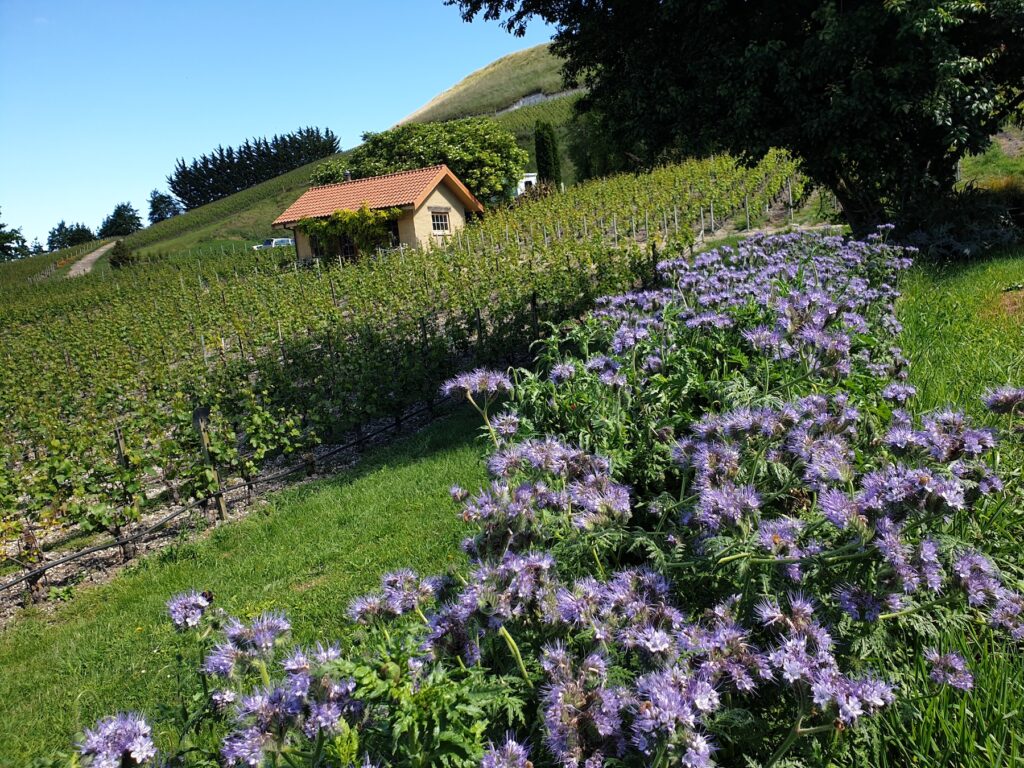
We’re moving into regenerative farming with this property. We’ve bought more land around us for that farming aspect. Not for major viticulture development or expansion but to move into a farming space, and also to grow inputs for making compost, some farm animals for our team, food, barley for beer. That kind of thing. Broadening our horizons if you like.
These are our new plantings from last spring 2020, and you can see over here our mixed species cover crop. We’ve got rocket, daikon radish, and so on. We’ve just crimped it and tried to keep it growing – a few weeks ago it was 1 metre high – for as long as possible, to have the seed bank. It’s a bit of an adjustment for us, but we’re moving away from our traditional organic farming methodology, which is under vine cultivation, and going into permanent cover crops. It’s a bit of a mindset change, and a visual adjustment because I’m quite a tidy person and I don’t really like seeing weeds and mess and so on, but I have to accept a bit of a change in this transition period.
WF: How much do you break the soil around your vines?
SV: Starting to do very little, so we’re looking to find appropriate cover crop species, like subterranean clover and the low-growing alyssum over there to occupy our under-vine space. We’re moving into not breaking the soil any more. We’ve just seeded with the autumn-winter cover crop seed. We did every alternate row in spring and what we’ve done is seeded into this without disturbing the soil. And then the row that didn’t get a cover crop we’ve just gently power-harrowed, but not a major cultivation. It will take some time to fully occupy with the diversity of plant species that we’re looking for, but it will come. We just have to stick with it.
This block here is called the Anchorstone, and this is the north arm of Bell Hill – we haven’t decided if we’re naming it ‘Bravo’ or ‘Big Glory’ for that block. Our favourite place in New Zealand is Stewart Island, and these blocks are going to be named after islands or bays in the Paterson Inlet. If we’re not here that’s usually where we like to be.
Everything at Bell Hill is Pinot Noir and Chardonnay, and we only have two blocks which are mixed – The Road Block and the Shelf. We had 72% Pinot Noir and 28% Chardonnay and originally we wanted 50/50, so we’re trying to address that with the new plantings.
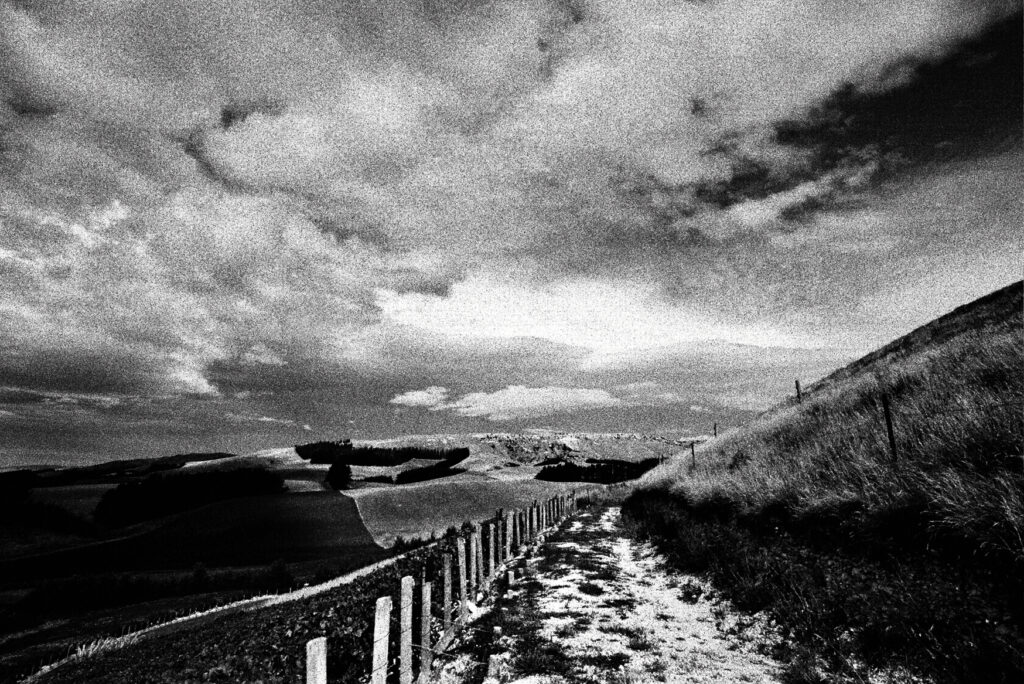
WF: I can’t remember seeing a vineyard quite like this in recent travels. And I’ve been in a few in New Zealand. Maybe something in France, but that’s been a while.
SV: We’re quite high elevation here. Most of the Waipara Valley is about 80 metres, and at the top of the hill we’re 320 metres. We knew we were in a marginal area and we were the first ones to plant grapes here. It was about minimising our potential for failure. We chose to go low to the ground because we’ve got this beautiful black soil and get a lot of heat radiation into the fruit zone. That helps ripen your fruit. Low to the ground for heat, vines close together so that they explore the soil profile, chase the water, and we get low yield per vine.
But when you’re low to the ground, you are also in the splash zone of your disease spores like botrytis, so when it rains your splash zone for raindrops is around 600mm. And as we’re close together there’s reduced airflow, so if things get humid we do get a bit more disease pressure. We do a lot of leaf plucking and lateral removal to make sure our canopy is open.
WF: Is wind an issue here?
SV: Yes, but we’ve planted a lot of shelter as you can see. Generally it’s manageable for us. And with the close rows at 1.1 metres, and 800mm between vines you get a lot of row to row shelter which helps a lot.
WF: I get a very romantic view of vineyards as I always come on beautiful days, and the people are usually relaxed and hopefully happy to see me. I don’t see the howling gales!
SV: We’ve been here 24 years and there has only been one day where I almost fell over from the wind. The dominant wind is the North West, and you can feel it up here in The Shelf, which is one of our oldest blocks, planted in 1998.
Our first block, The Quarry which is by my office there, was planted in 1997. So we started planting in ‘97, ’98, and then in ’99 we planted around the Cottage, and then we stopped because we wanted to evaluate clones and root stocks. Then we did a little bit more in ’05 to ’08 and then finished our planting in 2009. We restarted last year, and when you haven’t planted a block for eleven years there’s a lot of remembering to do!
We walk down the 63 steps from The Shelf, back down towards the winery. Sherwyn explains just how precisely things are done when the fruit arrives from the vineyard.
We do all of our winemaking here and we will be doing our own bottling. We’ve done a couple of runs ourselves on our current filler, but we’ve got a new filler coming from Germany, and we’ve bought a labeller. Then we’ll be fully self-contained. In the past few years we’ve had a mobile-bottling truck come, but it’s not ideal for a big truck to be getting in and out of here, and also not our preference for how we would want to do things. We’re quietly working away at making everything in-house.
The fruit all comes in on our top winery pad and we do all our sorting and processing up here. We’ve got a couple of vibrating feeding tables, and then we go onto this sorting table which can have 8-10 people on if needed. We sort again after de-stemming as well, so we’re sorting bunches and berries. Looking for anything that’s not quite right, under-ripe, or any botrytis that’s within the bunch that you can’t see from the outside. We have 2-4 people on that. We’re going to invest in some cuves.
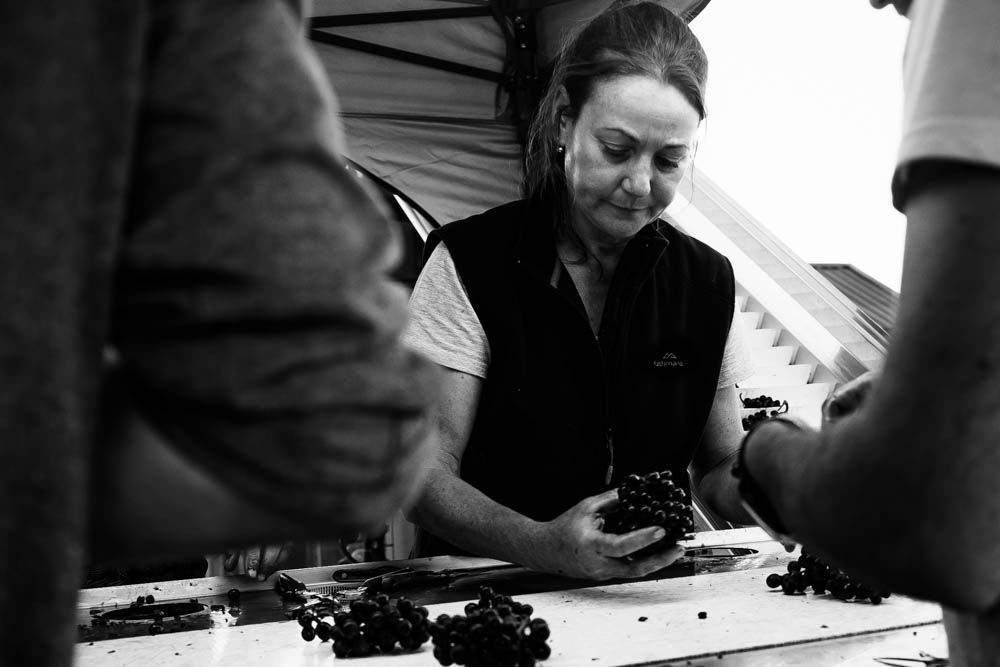
SV: We’re quite functional here at Bell Hill. We spend all our money on labour in the vineyard. When it comes to winery space this is practical – it’s four forty-foot, high cube, containers, buried under that slab and in the ground. Two of them have got hot and cold glycol and all have individual refrigeration units.
WF: How much wine do you produce?
SV: Depending on the season. A normal season would give us between 10 and 12 tonnes. We’re down 3 tonnes this year which is quite significant to us. Only six barrels of chardonnay in here, and normally we would have eight or nine. The chardonnay lives at the top and I’ll show you the Pinot Noir Cellar. It’s underground. We have plans to build another cellar for chardonnay. Everything happens over time, and very organically, at Bell Hill.
WF: No Visitor Centre with a Gift Shop?
SV: No.
Oh, and this is our basket press which we like very much. It’s very gentle, no crumbling of course and you get your extraction very quickly. We like that you taste off and decide when to stop. So we know what we expect with our extraction.
WF: I like to visit the place, and have that explain to me what is in my glass. The people, vineyards, land, and to some extent, process – or ‘thinking’ let’s call it. And I hope that some of that is in my writing and it encourages people to either do the same – where they can – obviously not everywhere is open to the public – or helps tell the story of the wine? Or at least gives extra layers of understanding.
SV: This season the first day of picking to the last day of picking was 20 days. Sometimes it’s in 7 days or ten days. As it extends out, so the whole winemaking extends out as well. Your last winemaking job doesn’t finish until four weeks or so after the last lot of Pinot Noir has come in. That’s the thing about harvest, it’s a very busy time with processing, and you need to find the space to be thinking well.
We step through a door in an outdoor wall that looks like something from a fairytale, and descend a spiral staircase to a dimly lit subterranean cellar filled with bottles and barrels.
SV: This is our Pinot Noir Cellar, and we have twenty three and a half barrels here. So from 2021 we only have fourteen barrels. We have Pinot Noir in barrel for just twelve months or so, and it’s all new oak for Pinot Noir. For Chardonnay it’s 10-15-20% depending on the volume of Chardonnay we have. What we do is when we’re ready to make our blends, we are also ready to put the next vintage in. Everything here is natural. Natural yeasts, natural malolactic fermentation, no fining agents, minimal filtration if needed. But we do believe in sulphur as a preservative.
I’ll show you a couple of wines. Let’s try something from The Shelf – where we walked along the base of it. This is the top part of The Shelf. Some years we separate the top and bottom, other years not.
WF: Are you planning on releasing any wines that are just from a single block?
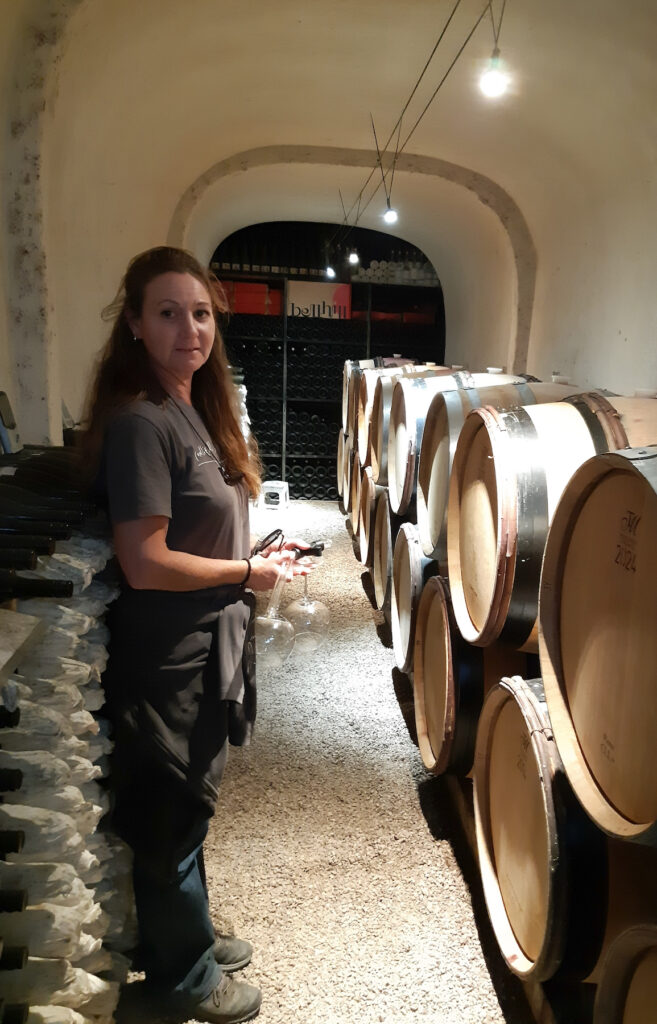
SV: Yes, our first single block wine is due for release. It’s from 2016, a Single Parcel Limeworks Chardonnay. That’s going to be released in the next couple of months with our 2017 wines. That was always the aim at Bell Hill. To make single parcel wines, but it took us a long time to finally get two hectares planted, with rootstocks coming through from France.
WF: I know people have talked about not doing single block wines, because they didn’t want to be taking things out from their main wines.
SV: You do have to be careful about that. Our first definite one is the 2016 Limeworks Chardonnay, from the block around the Cottage. Nothing from 2017, but we have a 2018 Shelf ’98 from our older vines, and we have two barrels from there, as a single parcel Pinot Noir.
And now from 2020 we have a single parcel Chardonnay from the Limeworks as well. We’re doing the second round of blends this afternoon. We only take a small amount of the barrels out and the rest are still going into the Bell Hill blend. It’s really important to keep that balance, and not rob Peter to pay Paul. You can’t change what people have perceived to be the strength of what you’ve done in the past. We’re very careful about that.
Road Block 2009 – half was planted in 2008 and half in 2009, and for a few years there was a difference, when the vines were young. But from last year we don’t see a difference – texturally, qualitatively, concentration. We have picked them at two different times, but in theory there’s no need to separate them. Very different soil in terms of its clay content. It’s got the topsoil and then heavy calcareous clay with lime underneath that. It’s very dense and has a high shrink-swell capacity. We had it measured by the Bourguignons who are agronomists in France and know a lot about soil.
WF: This is beautifully aromatic and a little bit richer, with a bit more generosity and sinew. It’s quite jazzy too. It’s got a lovely float across the palate. That’s quite a hard one to pull off, with that depth and ethereal at the same time. That’s a winner.
SV: All of the blocks are multi-cloned, so we pick by block, not by clone. It goes into its own fermenter, is pressed off separately and goes into barrel separately so we can keep that window open for looking at the wines. See how they develop and how they change. Learn about the blocks as they age – and we age – but also how they fit together as wines.
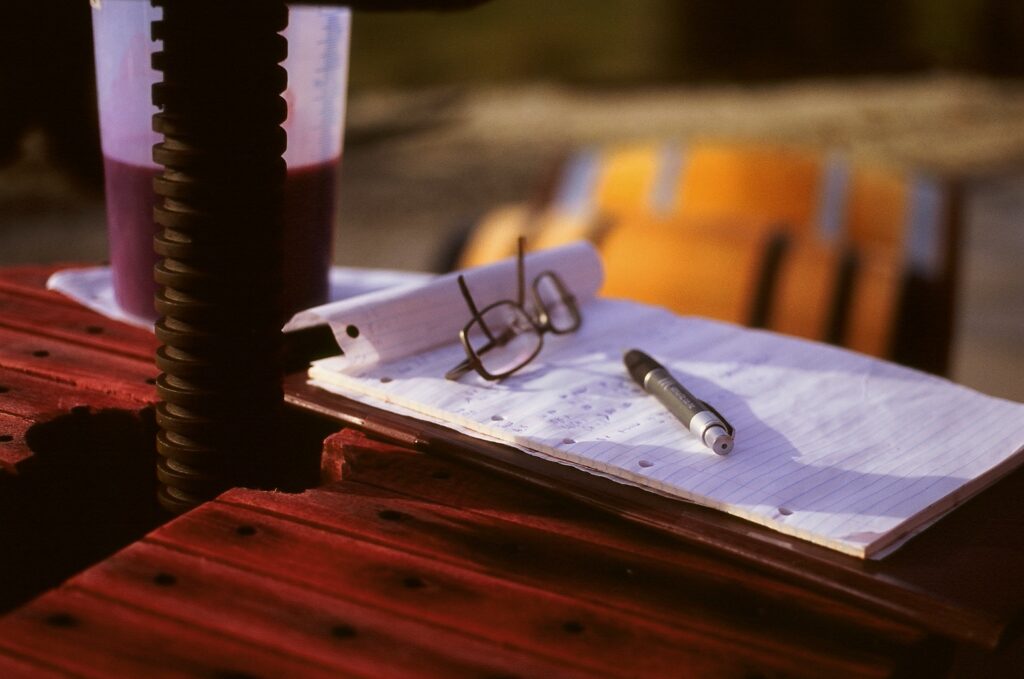
WF: Have you though about doing anything else? Sparkling?
SV: We do sparkling.
WF: You do not! I did not know that. How did I not know that?
SV: We haven’t sold any. Yet. (smiles) We have magnums, a blend of 1999, 2001 and 2002. Then we had a second bottling in 750mls – a blend of 2003 and 2004. We called it the Bell Hill Back Up Plan. If we couldn’t ripen fruit consistently at our high elevation in a new area, then we could, with Pinot Noir and Chardonnay…make sparkling wine.
We stopped doing that once we knew we could ripen our fruit consistently – the site was proven. But then in 2017 we had four cyclones early in the harvest period. Normally with cyclones, the forecast for the volume of the rain doesn’t pan out to be what you get. But in this case every millimetre that was forecast came, and then there was more. We had picked The Shelf and the West Bank, and then weren’t ripe enough to continue. We picked the remainder for sparkling. Then we made sparkling base wine in ’18 and then the plan was to make more in ’19 but our volumes were so low that we couldn’t allocate any to that.
In 2020 and 2021 we made a little bit more, so the idea is to make a blend from those years. Blend for Reserve and bottle a small amount. It’s always been something that we’re not afraid of, but it’s quite complex – sparkling wine. Deciding on the blends, second fermentation, I find it a little bit intimidating. Marcel less so, because he’s done that with his family business. It’s new for me – that final stage of it, the bringing it together.
WF: I expressed an interest in the Cremant they were doing at Kumeu River, and when we were down in the barrels, Michael gave me a taste of something without saying what it was. And I was like “what is this – I have no idea what I’m tasting?”. And it was reserve wine for the sparkling.
SV: Looking at things like Reserve wines where even 2% can make a big difference. You have to be very focussed. There are a few layers then in front of the window, that you have to look through, to imagine the final wine. With a secondary fermentation, then its time on lees – to see how that will be.
This Pinot is from The Quarry, and this is a single clone – 10/5. In The Quarry we’ve got one third of it which are the vines on their own roots – four different clones, and then we’ve got the 10/5 which ripens later. It’s New Zealand’s traditional workhorse Pinot Noir clone and we hadn’t intended to plant it, but there was a grower in Waipara that had miscalculated his plant requirement by 5000 vines. So we took 2500 of them and put them into less than an acre! 10/5 has a clonal stamp if you like and you can recognise it, but after a period of years, it changes and then it’s Pinot Noir from where it comes from. And that’s what we’ve experienced. We don’t have any more of it planted anywhere, apart from four rows on The Shelf, because it is a later-ripening clone. Here, with our elevation we are finding the Dijon and Pommard clones are working nicely for us.
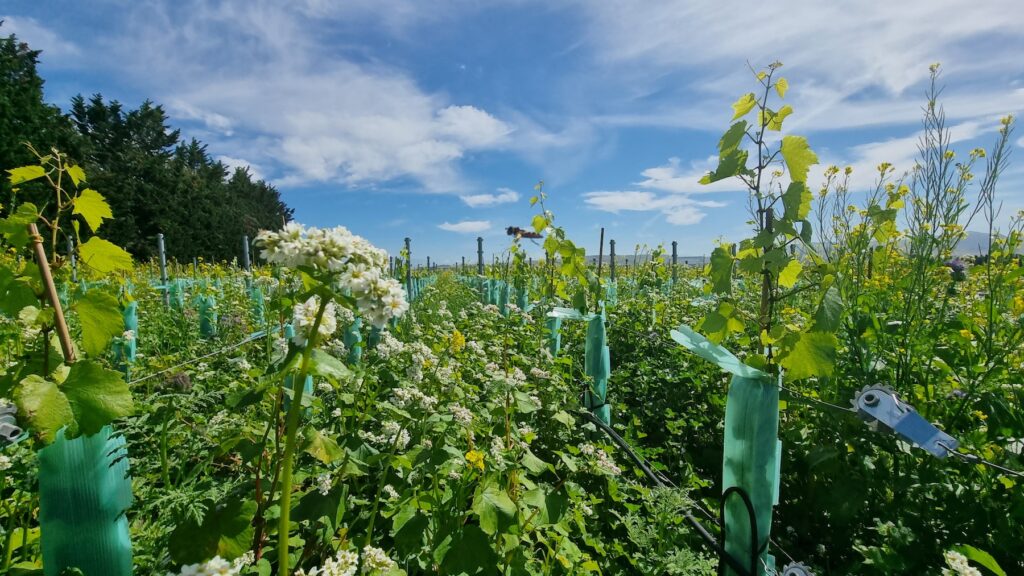
Now we’ve moved on to The Shelf West, which is a very important block for us. It’s where we start picking The Shelf normally, and its funny because a lot of people, including a lot of French people, who come here, are surprised that this is largely Pinot Noir. They look at the soil and it’s white. White soil, white wine. We have strong, elegant but not big wines. They have a sense of power to them. This is one of the contenders for the single parcel.
WF: I vote for this one. Where’s my bit of chalk, I want to tick that barrel? I’ll put a WF on it, so you know that I said to bottle that as a single parcel – barrel no. 2007.
SV: 2007 means vintage 2020 and barrel number seven. We’re not so big that we’ve had 2007 barrels in the cellar. It’s nice to get a look at the different parcels and a very good time of the year to taste them because they’re ready to come out now.
WF: I do like to try things, out of the barrel for example. It has a purity that I enjoy. I just had a 2021 red that was still all frothy and quite raw, but it was definitely wine. I’ve also been taking a look at natural wines, which is quite a different angle and education. It makes me think about what wine is? And why do I like this, or not like this? I like things to make me interested.
SV: What I think it has done is – there’s a whole pendulum of where you can sit in winemaking in terms of very large scale, commercial winemaking to natural winemaking at its most extreme. And what has been good about that movement, even if it’s not what we’re engaged in and engaged by, is that it does allow you to examine what you do and why, and push your boundaries and widen your perspective. It’s a good thing. We’re always interested to explore and expand, but at the end of the day, I want pleasure in my glass.
WF: Rule no.1 is always ‘delicious’.
The discussion is moved to the Cottage, and the two Bell Hill 2016 wines are about to be tasted…
SV: We released these in March last year and we still have a small amount for sale, which has been great. We had a lot more mail order customers come onboard this year. The 2017 vintage is low in volume, so we’ve kept some of the Pinot Noir back so we have some to offer alongside the 2017s.
WF: Do you sell all of your wine direct – because I don’t see it on the shelf anywhere?
SV: Our strategy is for no retail. We do have some retailers that are private customers. Basically, once we sell a bottle of wine it’s no longer ours, so we can’t determine what someone should do with it. But we can determine the price that we sell it for. Our philosophy has always been to give our loyal mail order customers the best price they can ever see. Therefore any customer who has a retail shop is a private customer, so we don’t have a ‘trade price’. If they want to sell the wine, then they have to sell it with a margin, and it will be more than what the customer could buy it for from us. That was always one of our things that we wanted to do, and we’re committed to that.
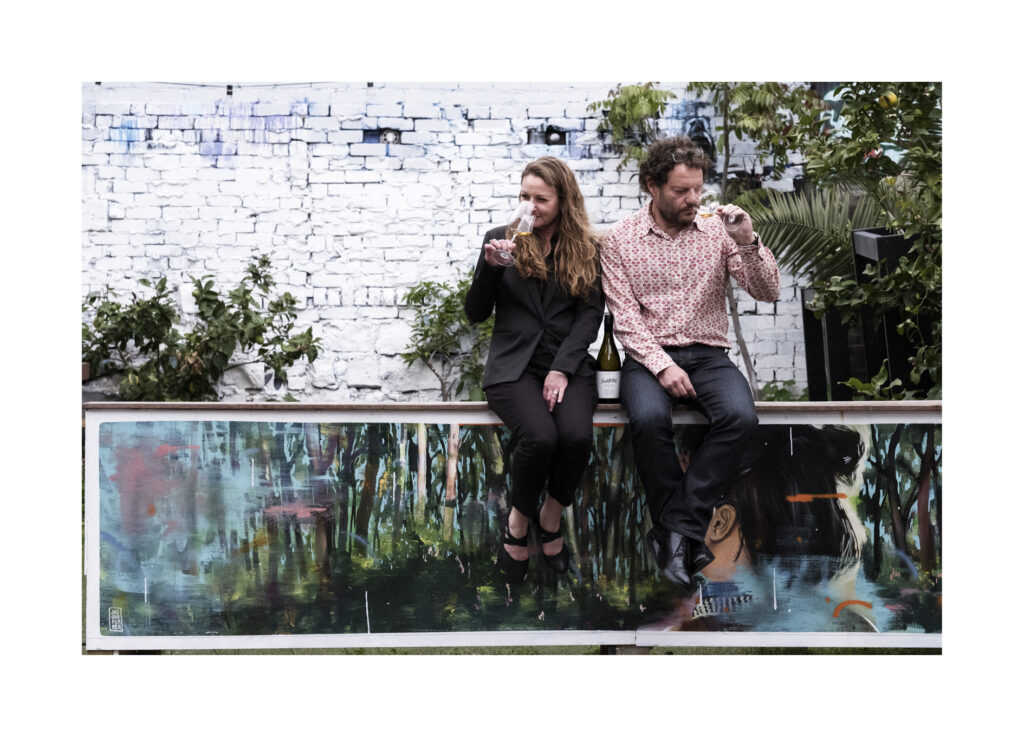
We’re a small producer who makes a small amount of wine. Wine can collect a bit of dust on a shelf and in the meantime you could have sold the wine three or four times over yourself. And no-one is going to sell it for less than they paid for it.
WF: So, someone could be buying it as an investment?
SV: We do limit how much we sell to one customer. You can’t just order 300. From when we first started – our first vintage was 1999, and until 2002 it was all under the Old Weka Pass Road label. In 2003 we had our first Bell Hill Pinot Noir. We had our sister label first until we had time on the land with winegrowing for the Bell Hill.
No one seemed to understand what we were trying to do here, or what our winegrowing philosophy was about. There was no concept of that in New Zealand, so our first market was always export. We started exporting very early on – ten different markets, and then New Zealand is our eleventh market. So we spread the wine quite wide but quite thin as well.
WF: Are there people who can’t get your wine? If someone went to a nice dinner and there was a bottle of Bell Hill that they tried. If they liked it and wanted some – can they get it?
SV: Yes and no. For example, with the ’16 vintage we still have some in stock because it was a bigger vintage for us.
And we do get emails every other day. And at the moment I can say ‘yes I have some’. Typically we would run out, and then it would be a matter of ‘yes you can join our mailing list, but we don’t have any wine to sell right now.’ We don’t have a waiting list, to be on our mailing list, because that’s a bit precious. What we do is review our database of mail order customers and if somebody hasn’t bought wine for two years, then we remove them from the list. We do invite customers who do not buy to inform us to be kept on our mailing list.
WF: So you say to people ‘it’s time to buy the new wine’ and send them an email.
SV: No, we send them a letter in the mail.
WF: Do you?
SV: Stationery. Letter-pressed. Traditional. With a letter, the Bell Hill story and the Tasting Notes, and a stamp.
WF: I love that.
SV: No Facebook. No Twitter. No Instagram.
WF: It’s funny because when I first arrived, you said to me you’ll have to ask me the right questions to find out what you specifically want, because the website is very comprehensive and full of information. And there is, but there’s not. Black and white angular photos. You’re quite mysterious.
SV: We made a choice not to engage at that level. Not to want the noise of it if you like. And not to be a slave to it.
WF: I think it has an aura, and the element of sending a letter is so cool. And just being here, I love some of the way that things are here. Those shipping containers are so utilitarian and functional – the way an ‘everyday’ object becomes beautiful when it’s in the right context and function.
That Chardonnay was beautiful. I do love my Chardonnays and it would be my first choice of wine, always.
SV: Likewise. Buy what you can, there will be a shortage, it’s dire and not just Burgundy – South of France, Italy.
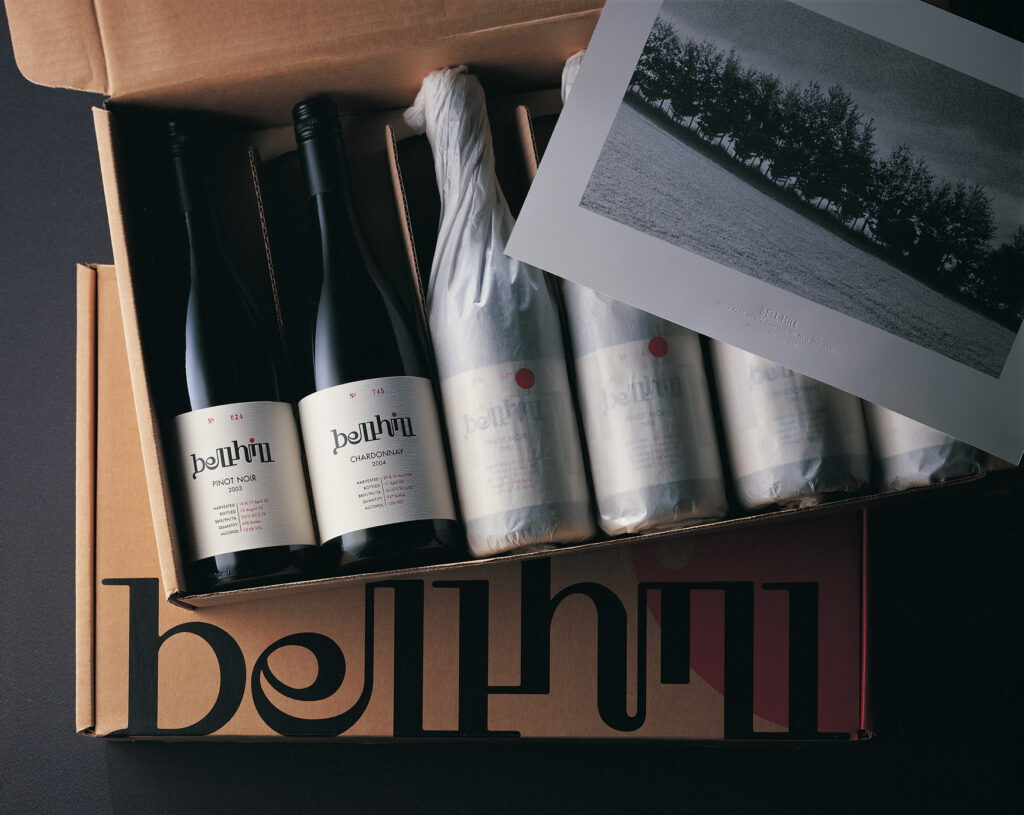
WF: But then I hear that people aren’t drinking as much wine any more, so maybe we don’t need to be producing as much.
SV: They are playing board games.
WF: Are they – is that a thing? I have a teenage son, and some of his mates play board games. They play this kind where you adopt a character for the game, and they act it all out – in character. They are all kids who did drama at high school, and they love it, play for hours on end. But then, I’m someone who has an arts background, and values the arts and culture almost above all else. In Europe, a ‘country’s greatest person’ is likely to be a musician, a poet, actor, writer, chef… not a rugby player or a mountaineer. To me, something in arts is always the pinnacle of human achievement. The best that we can be.
SV: I was talking to Marcel about this the other day. We were listening to an Italian opera singer and also some baroque music. Then we went for a walk, and Marcel said that the music we’d been listening to was composed 300 years ago, and how strange it seems that something so exquisite and sophisticated could have been composed at a time when the basicness of living and living standards was so far away from where we are. And yet that intelligence and art comes from another place, inside us.
WF: It doesn’t surprise me that a great piece of music could be written 300 years ago, because the good stuff is often outside of mainstream life, at the fringes and edges of the ‘churn’ of life. I think wine people are interesting. I put them into that cultural, artisan, thinkers and creators category. Interested in discovery.
(we get back on track – to the wine!!)
This Pinot Noir is a blend.. of everything?
SV: We did make an Old Weka Pass Road with the 2016 vintage, but that wasn’t a separate block, but a barrel de-selection if you like. We basically look at everything as a single blend and then we taste out of individual barrels, and we positively or negatively mark barrels. And then we look at it again at the blend with everything in it. We look at a blend with one or two or three of these question mark barrels, how they look in the cellar, without those in.. and then we say ‘ok how does this look?’ and if this is a better wine. It could be an experiment we did in the vineyard, or with winemaking, and whole bunch, younger vines. It could be a number of things. We keep ourselves open to making the best wine we can possibly make. Old Weka Pass Road gives us the tool to do that, and it’s not a wine that we make every year any more.
The Chardonnay is the Bell Hill Chardonnay, and then we also have the single parcel Chardonnay that I mentioned earlier, from the Limeworks block. One part is planted in 2009 – it used to be a Pinot Noir block; and the other is from 1999; and we pick those separately and you can see a difference. We didn’t take all the Limeworks block for the single parcel. We just had a meeting with the designer and we’re working on some new packaging and presentation for it. We only have 639 bottles of it.
We don’t enter competitions at all, and we don’t submit for magazine tastings. It’s never been our thing. We have to live in our space and what we do, and believe in. We’re not in the natural winemaking camp, or the cool garagista crowd. We continue to do what we started, and that’s who we are.
WF: I’ll go back to what I briefly talked about and alluded to earlier though, and that’s that I think you do have a coolness and a mystery to you. It’s like back in the golden age of cinema when you have posters of film stars on your bedroom wall. You didn’t know everything about them, with paparazzi, and what’s in their trashcan and all that. That layer of removal made them more interesting.
SV: I think if you were to see us here on a day to day basis, and how we have worked – we’re sitting at the same table as anyone who works here, having normal conversations. But we do value that one step of removal, and celebrate privacy.
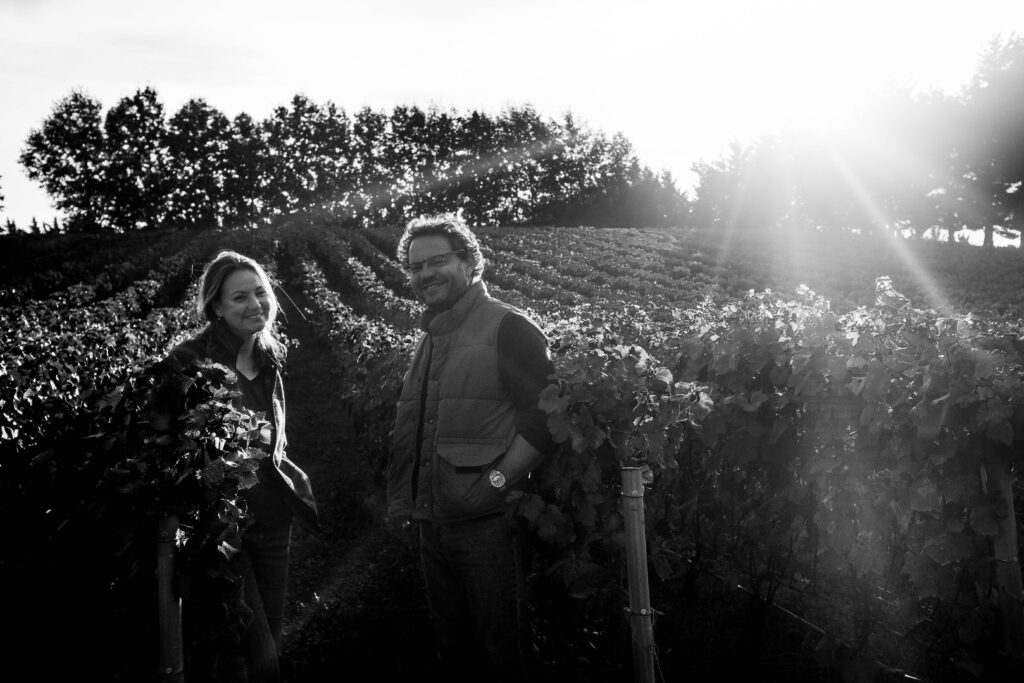

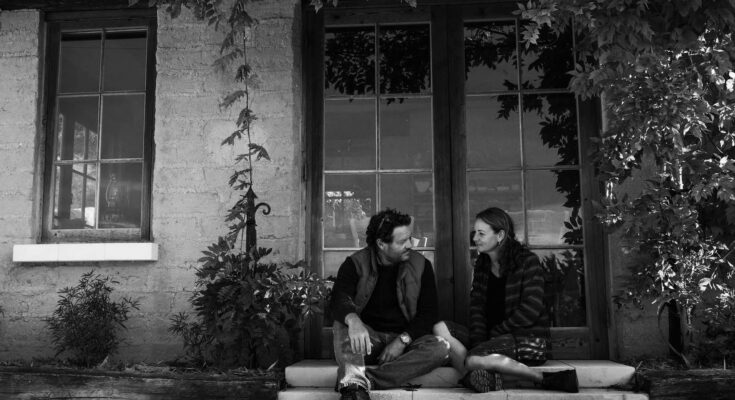


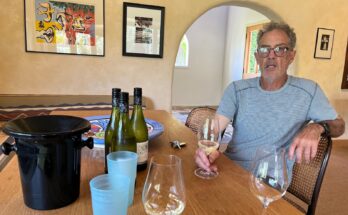
I’ll be looking out for a ‘Barrel 2007’ single-barrel Pinot in the future then?
Hi Kathy – I wish!!
Just had my 17s allocation confirmed … did you taste them
Tried the 2020s Pinot Noir from barrel, and 2016 finished wines – with Sherwyn